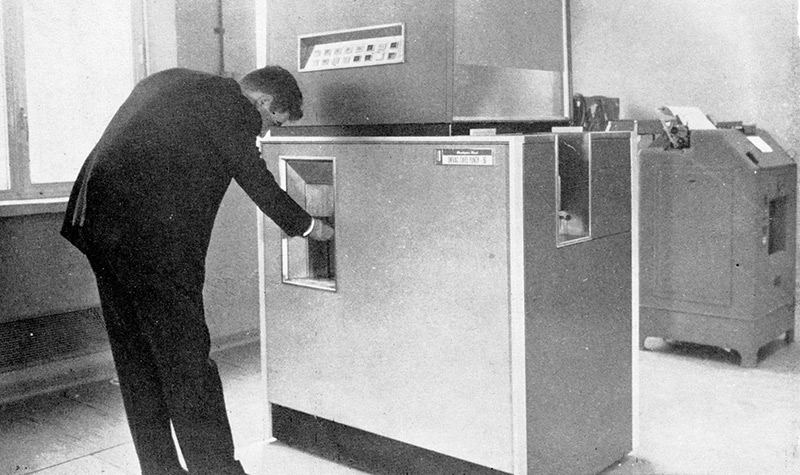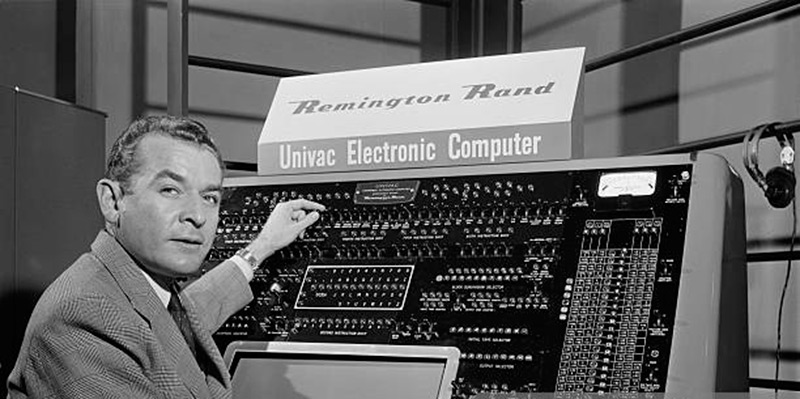
Index:
UPDATED ✅ Do you want to know more about what punch cards are and how you should use them today? ⭐ ENTER HERE ⭐ and Learn all about it
The progress that computing had is very great. At the end of the 19th century, punched cards began to appear. which allowed the automation of data through special machines. This meant that people no longer had to interfere in the process and the reports issued were more accurate.
Hollerith was one of the first to use these elements to improve the automatic information system, which achieved global acceptance by the public. Even the US military used these cards to record sensitive information.
But these are the only benefits that punch cards brought. if you want to know how they worked and the different types that were, continue reading this post. We will show you, among other things, what relationship TPs have with the storage disks that currently exist.
What is a punch card and why are they considered the beginning of computers?
A punched card is an element that was used in 1890 for the first time to incorporate information into the tabulating machine, created by Herman Hollerith to census the total population of the United States in that year.
It consists of a card with a binary system in which different types of questions with 2 answers or data are included.. Being pierced the one that was correct. Next, these sheets were placed on a container with Mercury and above them there were cables that, when they found a hole, recorded the information in the mercury.
In this way the loading of information was carried out automatically. It is estimated that in this census the information could be processed in only 6 weeks, whereas the previous calculation was 10 years if this type of machine was not used.
Therefore, it is said that the beginning of computing was born here and Hollerith is considered to be the father of computing. Since his invention, some estimate, is the first to be able to process data mechanically with the intervention of man tasks. Although for others Joseph Marie Jacquard was the creator of the automation of information with his loom of 1855. It is also believed that the invention of cards came to light in 1725 at the hands of Basile Bouchon.
What are the main features of a punch card and are they used today?
At present, these perforated cardboards are not used, since their use was replaced by storage disks such as CD-ROM. Which has a similar method to store information using binary data. But as expected, the efficiency of this latest device has no point of comparison with the old hollowed-out blades.
Now we will see the main characteristics that punched cards had in the past:
- They were based on binary methodthat is, their answers could only be of 2 types.
- They were organized by columnswhich had different places for them to host the data.
- Over time, took different dimensions. Being an important characteristic to differentiate them by manufacturing companies.
- For the drilling different elements were usedthe most modern being special pencils.
- They did not work if they were not inserted into the machines for which they were designed. That is, if you wanted to change the format for another, this would not work since the machine did not recognize them.
How does a punch card work? learn to use them

The cards were made of cardboard or some other resistant material that had different types of holes. They could be circular, oval or rectangular. These holes were known as “chads” either “chips”the last imposed by IBM.
If they put all the cards together, taking as reference the corners that, in general, tThey had certain cutouts to establish whether or not they belonged to the set of these, called “mallet”. This mallet was the one that was put into the drilling machine in order to process the data.
Next to the Chads were placed the “fields”. This was multi-character data that could include large words or numbers, laid out in columns adjacent to the card. After the card is used, usually they were kept in different places or destroyed so as not to duplicate the data. Since there was no way to identify the ones that had already been processed.
Formats and types of punched cards What are all the ones that exist?
punch cards they became very popular during a little more than the first half of the 20th century. This was due to the practicality they presented and the efficiency they had in issuing reports. There were different types of cards, but it was not until 1928 that they began to be standardized, thus generating a general purpose for all of them.
We present below the different formats and types of sheets that existed in history.
Hollerith Perforated
They were the first that made people take an interest in this type of technique. It was developed in 1890 by Herman Hollerith to carry out the census of that year to the more than 62 million people that existed in the United States.
Its measurements were 9 x 21.5 centimeters and were pierced by circles. The first ones contained 20 columns, but later that number was increased to 45. A curiosity that characterized these plates is that they were the same size as a dollar that existed at that time.
UNIVAC 90-character perforated

It was developed by the company Remington-Rand UNIVAC 2 characters were available for each of the 45 columns. While each of these had 12 places to pierce in a circular way.
IBM 80 Column Perforated
It is the first card that changes the round perforation for a rectangular one. It was launched in 1928 by IBM and had 80 columns of one character for each of these with 12 places for drilling.
Its measurements were 18.73 x 8.25 cm. They had a thickness of 0.179 mm. They had 12 positions distributed 10 in the lower part, which represented each of the digits, while the 2 upper ones were called “Drilling Zone 12” Y “Drilling Zone 11”. These two areas were used for addition and subtraction respectively.
In 1964 IBM made major changes to the code entry method. Capital letters and characters began to be combined to represent letters and other necessary combinations. This achieved that up to 6 perforations can be made per column. In addition, the design of the corners was changed to round ones.
This type of card was widely accepted by users, giving it the generic name of “IBM cards” to all those that existed in the market at that time.
mark-sense
This type of sheets had a oval piercing and were designed by the father of the hard drive, Reynold B. Johnson, an IBM employee. They had the peculiarity that an electrographic pencil was needed to make the holes and they could incorporate additional information to better represent the data that would be drilled with the ovals.
Opening
It was created in 1943 and were used for diagrams in any discipline that is necessary engineering. Perforations are made on the right side of the card through a sliced hole, which contained a 35mm film with a microform image, the one that was mounted in the drilling.
He had his success in the United States Navy and in all the armed forces of that country. By early 1957 its use was popular in all US government agencies.
51-column IBM
This sheet is an evolution of the perforated card of 80 IBM columns. Although it has the same functionality, the number of columns was restricted to 51, so that they were used by other types of users with lower requirements.
In this way it became popular in those small businesses that needed to record sales and inventories from a market with minor operations.
Hardware